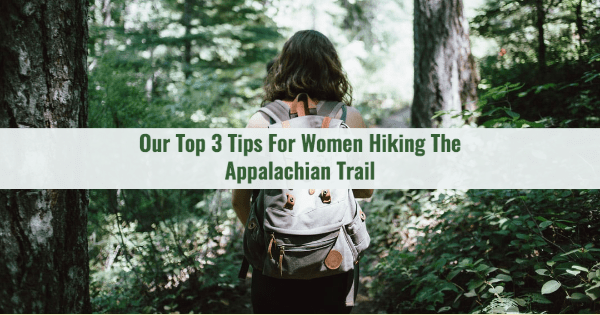Hiking used to be something of a male-dominated hobby, and long-distance hiking in particular. This is in part due to the fact that long-distance hiking, on trails like the Appalachian trail, tends to take quite a while and is usually a solo activity. In the past, it was assumed that women were not “up” for this kind of hike, or that it was too dangerous for them to hike alone.
Fortunately, attitudes have progressed to the point that more and more women are feeling not only comfortable with long-distance hiking but excited about it. For one thing, women have come to realize that they’re capable of anything that men do. Long-distance hiking is one of many pursuits women are tackling in recent years, such as entrepreneurship. The number of new women-owned businesses is now growing at twice the rate of male-owned businesses. For another, the physical and spiritual rewards of these types of hikes were well-publicized through Cheryl Strayed’s memoir “Wild” and the subsequent film adaption. Though Strayed hiked the Pacific Crest Trail, this particular trail can be a bit daunting for your first long-distance hike. This is why many women try their hands at the Appalachian Trail first — but that trail in itself isn’t anything to approach lightly.
It’s important to take the proper precautions before beginning your hike on the Appalachian Trail. Though violence is extremely rare on the trail and it’s considered safe, it’s still a long way to hike, and you don’t just have to worry about other hikers on the trail. You also have natural elements to contend with, as well as the limitations of your own body. That’s why we’re giving some of our top tips for women planning to hike the Appalachian Trail. Hiking this trail can be incredibly rewarding, and may be exactly what you need after a tough year, or when you simply want to do something that’s both challenging and fun. With that being said, let’s look into what you need to think about before beginning your Appalachian Trail hike.

1. Pack Practically
If you’re hiking the Appalachian Trail completely on foot, you’ll want to think about how much time you’ll spend on the trail, as well as what you’ll need to take with you along the way. All in all, the trail is 2,200 miles long. This means that it will take the average person about seven months to complete the entire trail without any long-term breaks. If you’re planning on hiking the entire Appalachian Trail, you’re not going to be able to do so without taking something of a considerable break from your everyday life. Some people take sabbaticals from work, whereas others hike the trail chunk by chunk and stacked vacation time on it. As 96% of people indicate that their vacation time is very valuable to them, this illustrates how dedicated some are to hiking the trail. Of course, it’s not like you’re going to carry seven months’ worth of supplies on your back. You’ll want to focus on what you can easily reuse, like small cookware, as well as of course your tent and sleeping bag, and practical clothes that can be easily washed.
2. Consider Feminine Hygiene Ahead Of Time
Though not every woman has to deal with menstrual cycles, most do; and therefore, most women hiking the Appalachian Trail will have to take this into consideration if they plan on hiking for more than a certain amount of time. You can rely on your usual sanitary products, but tampons and pads are not environmentally friendly and can attract animals, which is why hikers often have to use products like Ziploc bags to carry around used products until they reach their next pit stop where they can toss them. This is why many hikers prefer menstrual cups, which are reusable and allow for easy disposal of the contents. Some also choose reusable pads, which can be washed and worn again, but remain rather bulky and difficult to deal with. Some women choose to go on a birth control that minimizes or eliminates their periods before hiking — not a bad idea if you’re hiking long-term.
3. Be Overly Cautious
There is always something of a risk carried with being a woman alone, unfortunately. This risk does not go away just because you’re in an environment with fewer people. For one thing, you’d be surprised by how many people you’ll likely encounter on the trail; right now, there are an estimated 30 million RV enthusiasts in the United States, and you’ll probably see a lot of them somewhere along the Appalachian Trail. The majority of people you’ll meet will probably be fine, either friendly or keeping to themselves. But there’s always the risk of meeting who would take advantage of the solitude offered by the trail, and even if you have cell phone reception help may not be immediately available. Therefore, it’s important to keep your bear spray, which will also dissuade humans, close — and you may want to invest in a knife as well. You may also want to take a self-defense class before your hike, and consider a GPS messenger so that you can keep in touch with your loved ones. Remember that you’ll still be at risk from strangers when at a pit stop, which is why you need to be aware of who you’re spending your time with.
The Appalachian Trail is completely doable for the majority of women. Though it is a tough challenge, you’ll feel great about yourself once you’re done with it, and can lay claim to the fact that you did something the majority of people cannot say that they’ve done. Be proud of yourself, and be safe!



“Hello,
I think you are a good traveler because your knowledge regarding hiking is awesome. I really enjoy this writting.
Thanks and please keep it up”